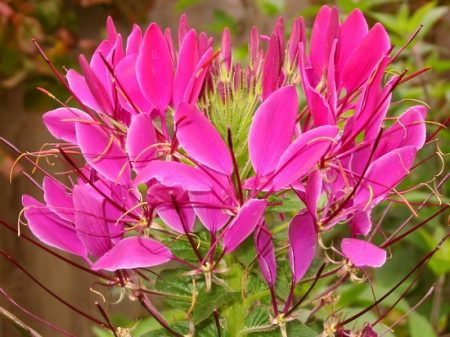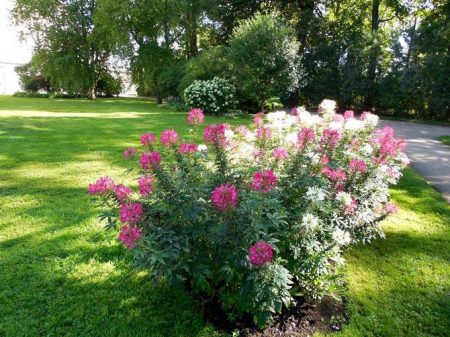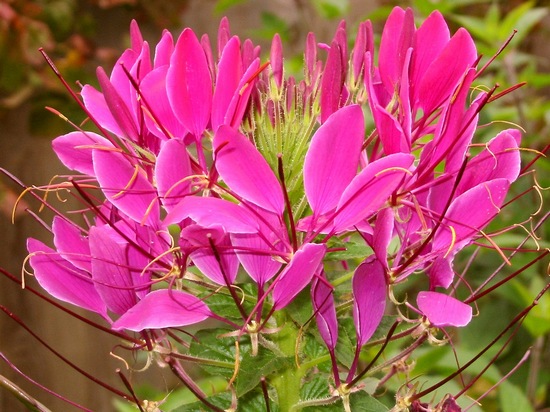 Cleoma can be found in almost any corner of the planet, where a warm or temperate climate prevails. The plant belongs to the Kleomov family, annual or biennial. In its way, it has about 70 species. Gardeners love glue for unusual inflorescences - they resemble splashes of champagne. To some, it may seem like a spider, but it will definitely not leave anyone indifferent. Cleoma has an unusual aroma and long flowering - from June to September inclusive.
Cleoma can be found in almost any corner of the planet, where a warm or temperate climate prevails. The plant belongs to the Kleomov family, annual or biennial. In its way, it has about 70 species. Gardeners love glue for unusual inflorescences - they resemble splashes of champagne. To some, it may seem like a spider, but it will definitely not leave anyone indifferent. Cleoma has an unusual aroma and long flowering - from June to September inclusive.
The stems of the kleoma are powerful, high, have many branches. The height of the plant is about 1.5 m. The leaves are both simple and complex, small. The flowers are in the correct shape, the color is white, purple, pink or yellow. Inflorescences are collected in such a way that from afar they resemble spider legs. After flowering, the seeds ripen in a box, similar to a pod about 2.5-3 cm long. The smell of kleoma is almost not felt by people, but it serves as an excellent insect repeller.

The plant propagates with the help of seeds. Cleoma: growing from seed: when to plant? They are sown in open ground before the start of winter (in November) or in spring. But the cleome is most well established in the soil when planting it by the seedling method. To obtain high-quality seedlings, the seeds are sown in pre-prepared containers at the end of February. In order to soften the dense scales, the seed is soaked for 12 hours in water with the addition of zircon or epin at the rate of 1-2 drops per glass of water at room temperature. The soil in the tank should consist of black soil, humus and sand. It is not planted deeply - about 1.5 cm, it is covered with a thin layer of earth on top and covered with a film to create the effect of a greenhouse - high humidity and temperature.

The first sprouts will appear after 14 days. Then the seedlings will need to provide additional lighting in the evening. The soil should not be wet all the time. One or two irrigation per week will be enough. In order that the plant is not exposed to diseases, one need to be irrigated with a weak solution of potassium permanganate.
After the first leaves unfold, seedlings are dived and wait two weeks until it is planted in open ground. Seedlings can be fed with mineral fertilizers. Landing in the open ground is carried out after warm weather is established and night frosts pass. The soil for planting should be fertile, light, good air permeability.
You can’t get past flowers like sparaxis. Their original appearance will help to create a masterpiece in your garden area.

